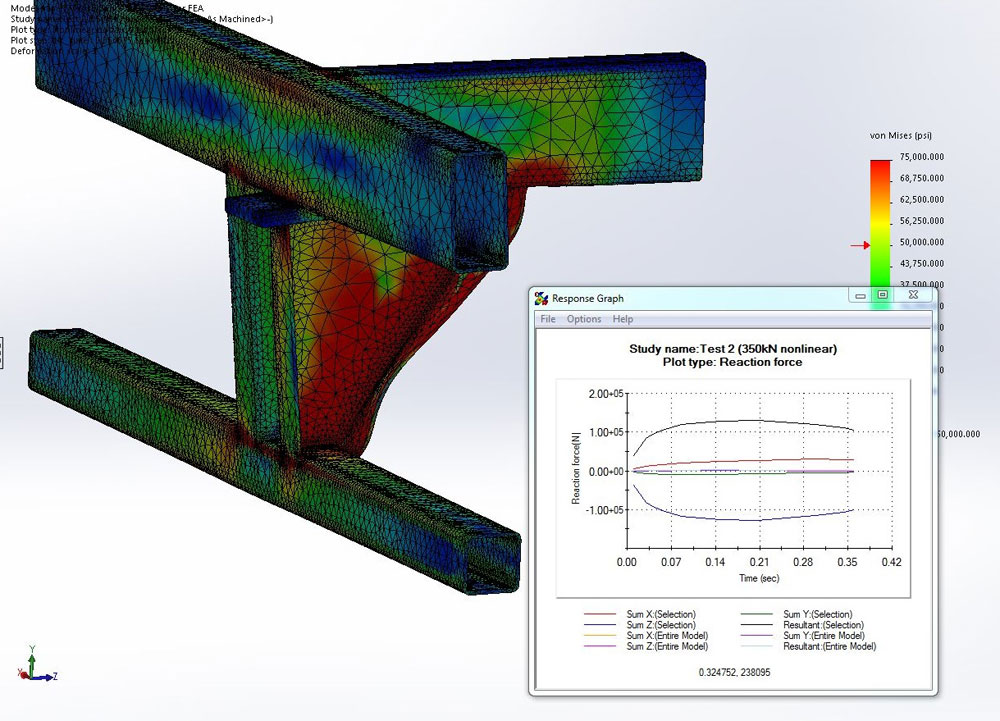Technical Problem
The design needed to be either physically tested or computer simulated using more advanced models that allow for permanent damage. When we say damage in this context we technically mean plastic deformation. Plastic deformation requires a non-linear finite element analysis (FEA) approach which is not as common as typical linear elastic analysis FEA. If possible to simulate the testing procedure required by the regulation, then our client could test many designs for far less cost than building and running actual physical testing.

FEA model showing stress distribution upon impact
Some of the specific configuration and testing requirements of the regulation are:
Configuration Requirements
The configuration requirements are given in subsections 5-8 and are included below:
- (5) The horizontal member of a rear impact guard shall have a cross-sectional vertical height of at least 100 mm at any point across the guard width when installed on a trailer.
- (6) The outermost surfaces of the horizontal member shall extend outboard to within 100 mm of the longitudinal vertical planes that are tangent to the side extremities, but shall not extend outboard of those planes.
- (7) When the trailer is resting on level ground, unloaded, with its full capacity of fuel, its tires inflated and its air suspension, if so equipped, pressurized in accordance with the manufacturer’s recommendations, the ground clearance shall not exceed 560 mm at any point across the full width of the horizontal member. However, rounded corners may curve upward within 255 mm of the longitudinal vertical planes that are tangent to the side extremities.
- (8) At any height above the ground clearance, the rearmost surface of the horizontal member shall be located as close as practicable to a transverse vertical plane tangent to the rear extremity of the trailer, and no more than 305 mm forward of that plane, as shown in Figure 1. However, the horizontal member may extend rearward of the plane.
Test Requirements
The test requirements are given in subsections 9 – 12 and are summarized below:
Test 1: Deflect less than 125mm when subjected to a 50 000N force on P1 and P2 as shown in the following figure, and
Test 2: Either
- a) Deflect less than 125mm when subjected to a 350 000N, and absorb at least 20 000J of plastic deformation energy, or
- b) Deflect less than 125mm when subjected to a 700 000N uniform load (no plastic deformation requirement)
- c) Have a ground clearance not exceeding 560mm after the uniform load test has been completed.